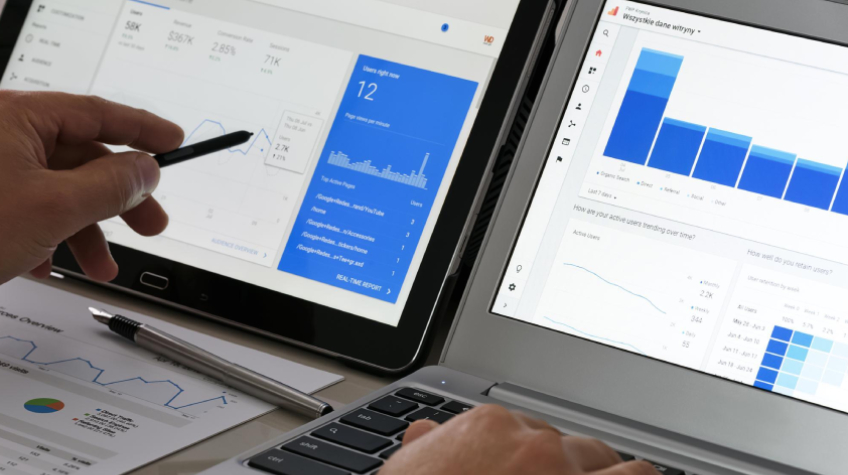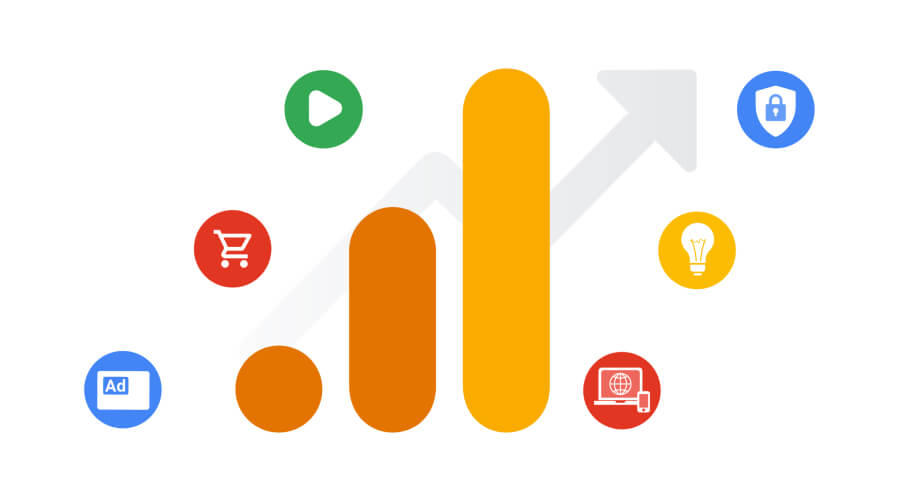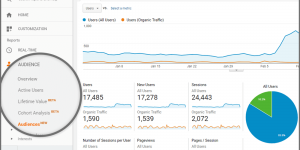
Google Analytics is an invaluable tool for businesses to utilize when it comes to understanding important metrics related to their website traffic. It provides detailed insights into the performance of websites, including who is visiting, how long they are staying, and what actions they are taking on a website. With all these metrics available, it can be overwhelming to decide which ones should be tracked closely. This article will provide useful information on some of the most important metrics to track in Google Analytics.
What Are Metrics In Google Analytics?
Metrics in Google Analytics are a crucial component of measuring website performance. They enable website owners to gauge the effectiveness of their digital marketing strategies, understand consumer behavior and identify areas for improvement. Metrics provide data-driven insights into how users interact with a website, allowing businesses to make informed decisions that improve customer experience and drive sales.
Google Analytics is designed to track various metrics such as page views, bounce rates, session duration, and conversion rates. These metrics offer an overview of the user’s journey throughout the site, providing insight into what works well and what needs improvement. For instance, a high bounce rate suggests that users are not finding what they need on a particular page or that the content is not engaging enough. Conversely, a low bounce rate indicates that users are finding value in the content provided.
What Metrics Are Tracked By Default By Google Analytics?
Google Analytics tracks several metrics by default to provide insights into website traffic and user behavior. Some of the often monitored metrics are:

- Sessions – the sum of all visitors to a website
- Users – the number of distinct website visitors
- Pageviews – the total number of pages on a website that were visited
- Bounce rate – the proportion of users that only browse one page before leaving a website
- Average session duration – the average amount of time visitors spend on a website
- Acquisition – the source of the website traffic (organic, direct, referral, etc.)
- Conversion rate – the percentage of website visitors who complete a specific goal or action
To gain a better understanding of these metrics and how to use them to improve website performance, consider taking SMO training in Delhi. This training will provide you with a comprehensive understanding of Google Analytics and other tools used for social media optimization, allowing you to track and analyze website metrics effectively.
Which Metrics Are The Most Important To Track?
As businesses continue to invest in digital marketing, it becomes increasingly important to track the right metrics in order to gauge the effectiveness of their campaigns. While there are many metrics available, some are more important than others. The most critical metric that every business should track is conversions. This measures how many users actually take action on your website or landing page after clicking through your ad. Conversions can include purchases, form completions, sign-ups, or any other goal that you have set for your campaign.
Another crucial metric is click-through rate (CTR), which measures the number of clicks that an ad receives compared to its impressions (how often it was shown). A high CTR indicates a strong ad and targeting strategy, as users found the ad relevant enough to click on it.
Also See: Everything You Need to Know About Google Web Stories
What Would Be The Top Three Metrics To Monitor In Analytics?
There are a few key metrics that you should always keep an eye on in Google Analytics. The following list includes the top three:

- Sessions: This metric measures how many times users have visited your site. It’s a good indicator of overall traffic levels and can help you track growth over time.
- Pageviews: This metric tells you how many pages on your site have been viewed. It’s a good way to gauge engagement and see which content is most popular with your audience.
- Bounce Rate: This metric measures how often users leave your site after viewing just one page. A high bounce rate can be an indication that your content isn’t relevant or engaging for your audience. By monitoring these three key metrics, you’ll get a good sense of how your site is performing and what areas need improvement.
Conclusion
In conclusion, it is important to keep track of your website’s performance through Google Analytics. By tracking the right metrics, you can gain valuable insights into the effectiveness of your website and digital marketing efforts. Metrics such as page views, bounce rate, time on page, user engagement, and conversions are essential for understanding how visitors interact with your website. Moreover, by tracking these metrics over time you can identify patterns that may help with optimizing your website or campaigns.






